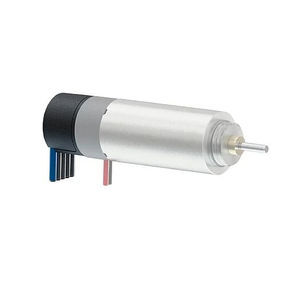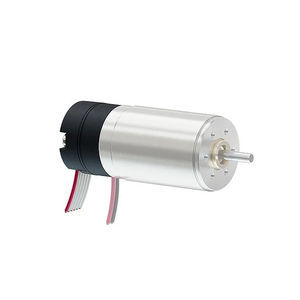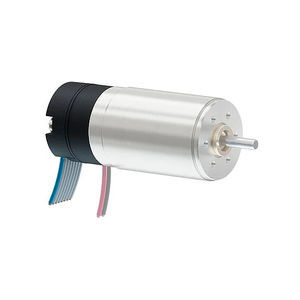
- Components - Spare Parts
- Landing and Braking
- Incremental encoder
- FAULHABER Drive Systems
- Company
- Products
- Catalogs
- News & Trends
- Exhibitions
Incremental encoder IE seriesfor aircraftmagneticoptical
Add to favorites
Compare this product
fo_shop_gate_exact_title
Characteristics
- Type
- incremental
- Applications
- for aircraft
- Technology
- optical, magnetic
- Length
6.2 mm
(0.244 in)- Output frequency
320 kHz
- Process temperature
Min.: -40 °C
(-40 °F)Max.: 100 °C
(212 °F)
Description
Incremental encoders from FAULHABER measure the shaft rotation and enable both the precise measurement of speed as well as the highly accurate positioning of the drive. Most brushless DC-motors from FAULHABER are offered with fully integrated, analog Hall sensors that can replace the function of an incremental encoder. For the other motors as well as for applications that require a higher level of accuracy, suitable incremental encoders are available. They have an extremely compact design and add only minimal length to the given drive solution.
What is an incremental encoder?
Encoders detect the rotary movement of a shaft. The rotation is divided into pulses of smaller or larger size depending on their resolution. An incremental encoder does not detect the absolute position of a motor shaft but instead detects it only relative to a reference position. It, thus, counts how many pulses the current position is from the reference. Position data can be derived from this value. FAULHABER offers incremental encoders with optical and magnetic measurement principle.
How does a magnetic incremental encoder work?
The device uses sensors to detect changes to a magnetic field. A sensor magnet on the motor shaft supplies the magnetic field that moves with the motor rotation. The sensors are placed on the PCB of the encoder and detect this rotary movement.
How does an optical incremental encoder work?
In addition to the electronics, an optical incremental encoder consists of three key components: light source, code disc and photosensor. The bundled light beam of the light source is directed at the code disc, which rotates with the motor shaft.
Catalogs
Technical Information
160 Pages
Series 2232 ... SR
2 Pages
*Prices are pre-tax. They exclude delivery charges and customs duties and do not include additional charges for installation or activation options. Prices are indicative only and may vary by country, with changes to the cost of raw materials and exchange rates.








